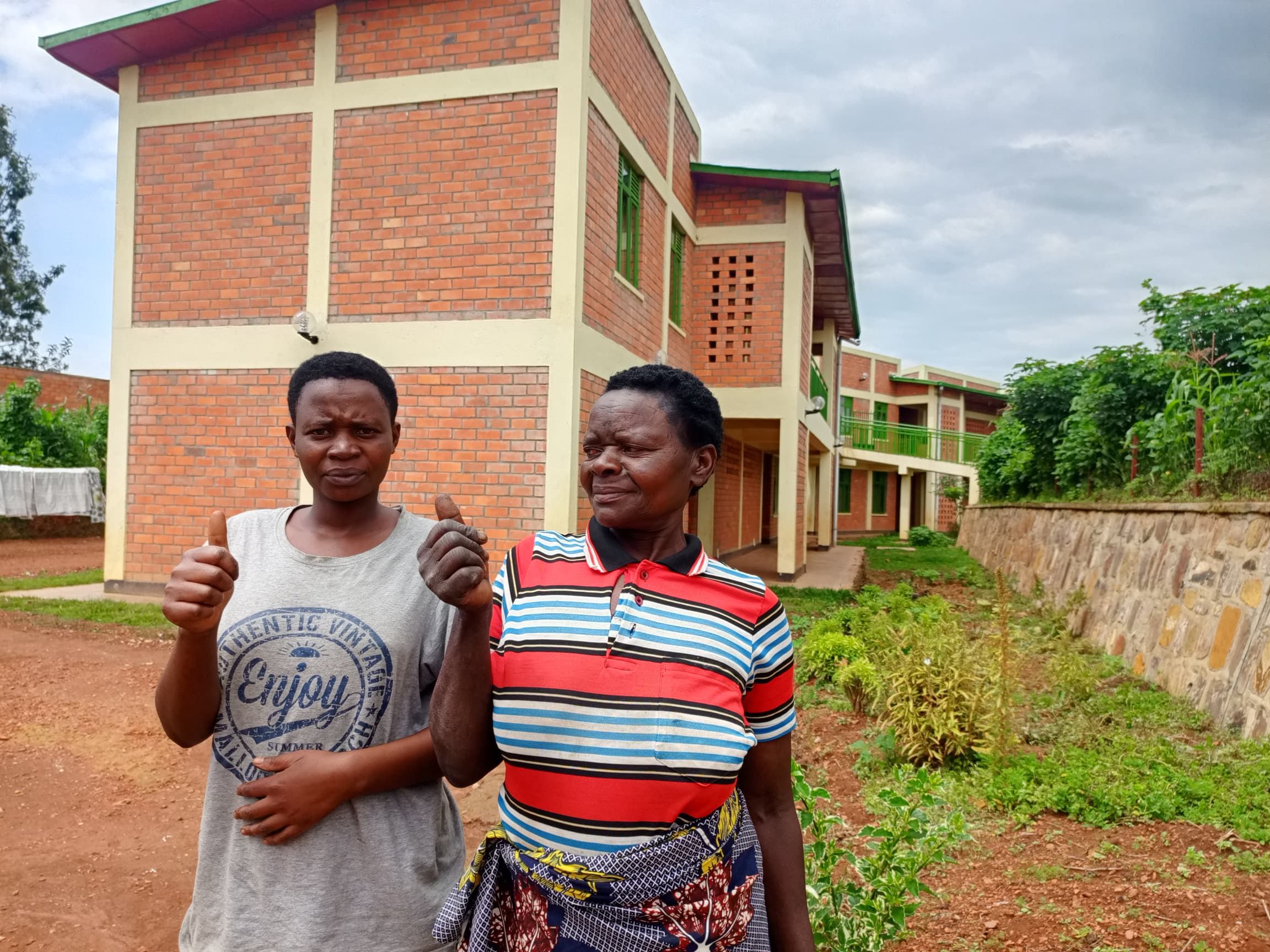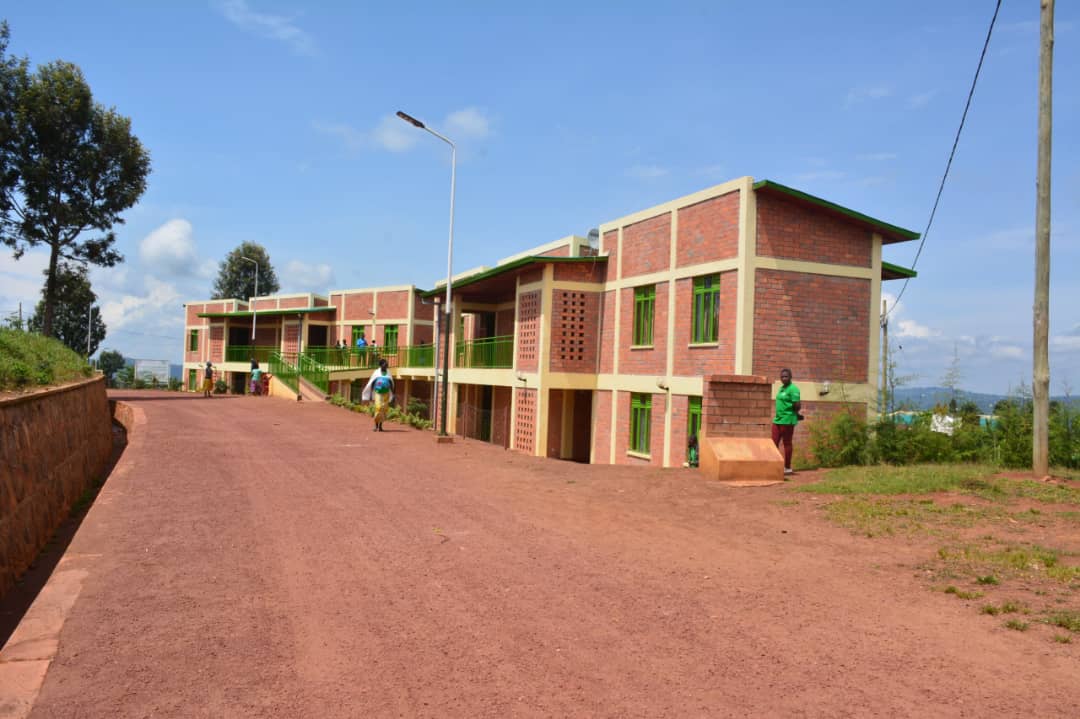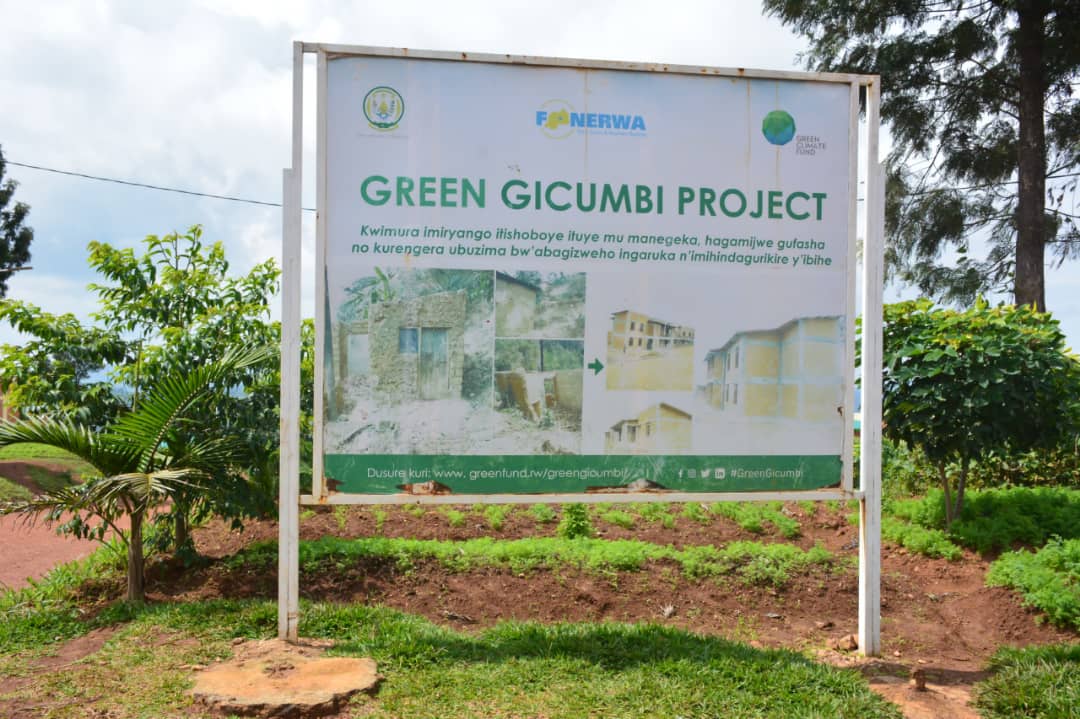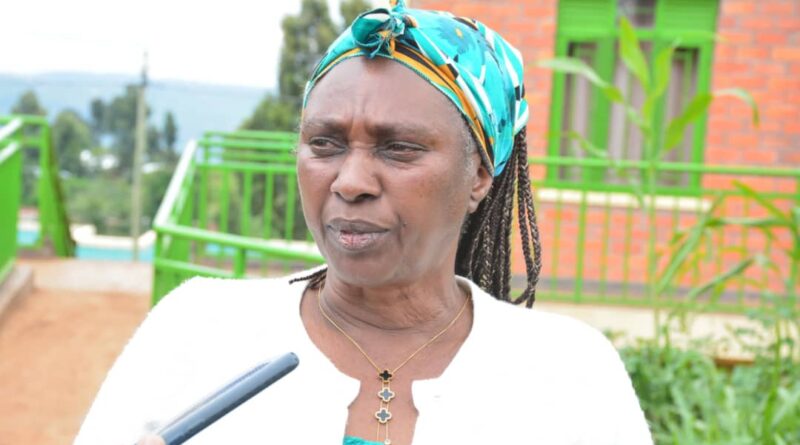Testimonies from residents benefiting from the Green Gicumbi Project
Jean Nepomuseni, who was resettled in a village located in Kaniga Sector, says they were provided with decent houses equipped with clean water and filtration systems, which has helped eliminate cases of children suffering from intestinal worms.
He echoes sentiments shared by fellow residents, explaining that they used to live in high-risk zones where their lives were constantly in danger. But thanks to the intervention, they were relocated and given modern houses designed to withstand the effects of climate change.
Another resident recounts how a heavy downpour once swept away the small livestock he had, causing him significant loss. However, like others, he was compensated and given improved dairy cows, as well as resettled in a multi-storey modern house, which has enabled him to start progressing economically.
He adds that although the Green Gicumbi Project operates in only nine sectors, wherever it implements its activities, local people are given jobs, and their forests are restored for free—efforts that will help preserve the soil and improve air quality.
Jeanne Bayera, also resettled in the Kaniga model village, refers to Green Gicumbi as a ‘mother figure’ because they used to spend sleepless nights fearing their old house, located on a steep slope, might collapse due to rain. But now, she says, they can sleep peacefully.
She says: “Green Gicumbi has truly been like a parent to us. We used to live in extremely hot houses built on hillsides. Now, we live in beautiful, climate-resilient homes that collect rainwater and are equipped with drainage systems that prevent flooding. No house here can be swept away by water.”
Jean Marie Vianney Kagenza, the project coordinator of Green Gicumbi, urges the 100 families resettled in Kaniga and Rubaya model villages to take ownership of the infrastructure provided to them, rather than assuming it all belongs to the project.
He says: “We’ve constructed two climate-resilient villages in Rubaya and Kaniga sectors, which we intentionally designed to cope with climate change impacts. Whether it’s rainwater harvesting or protecting the soil, residents need to preserve what’s been given to them. They should consider it theirs, not just project property. We’ll continue raising awareness so they can live better lives than before when they were at risk.”
Beyond resettlement, residents say the project has built radical terraces on their farms, significantly improving productivity. They’ve also been supported with erosion control ditches and tea plantations on the hillsides, all aimed at environmental conservation.





